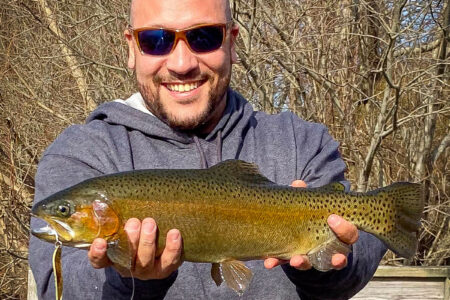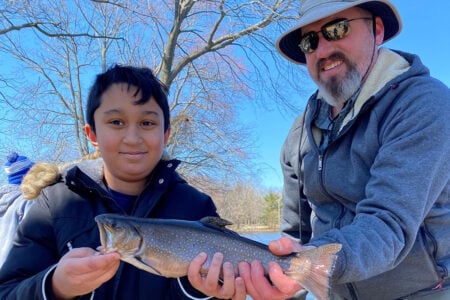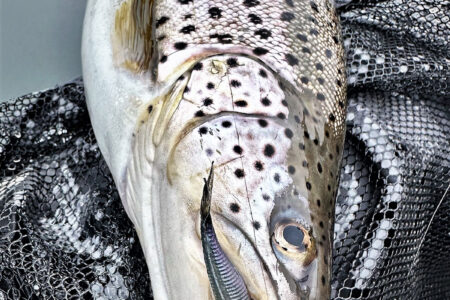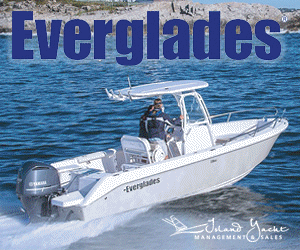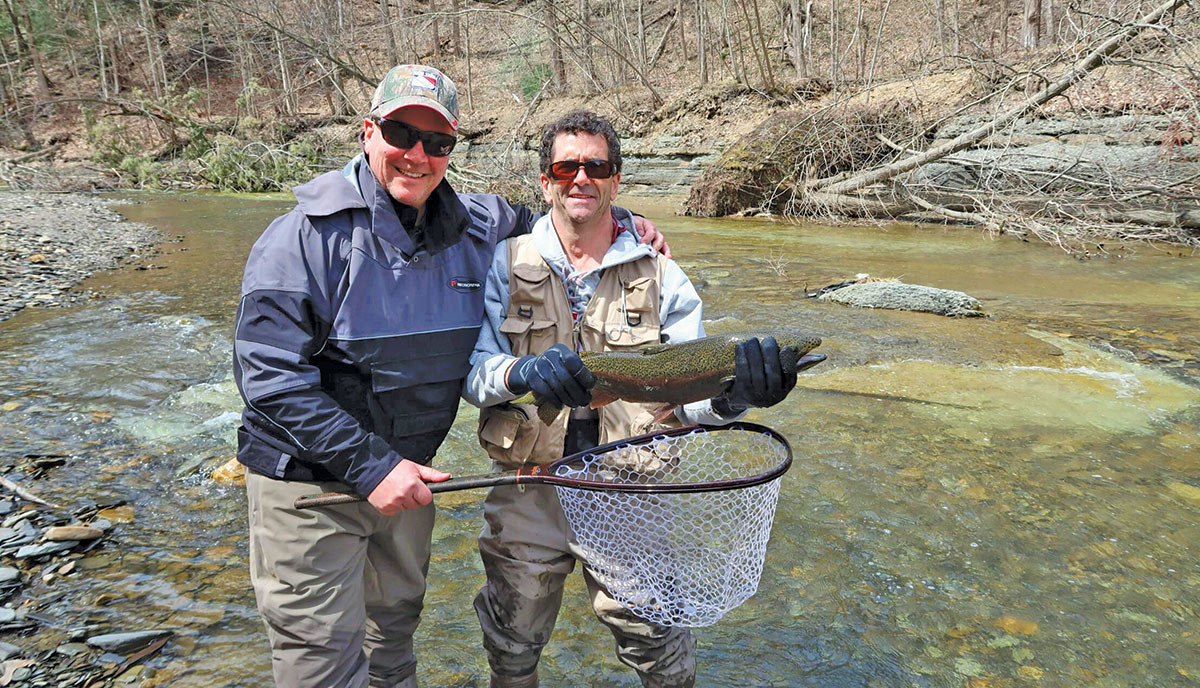
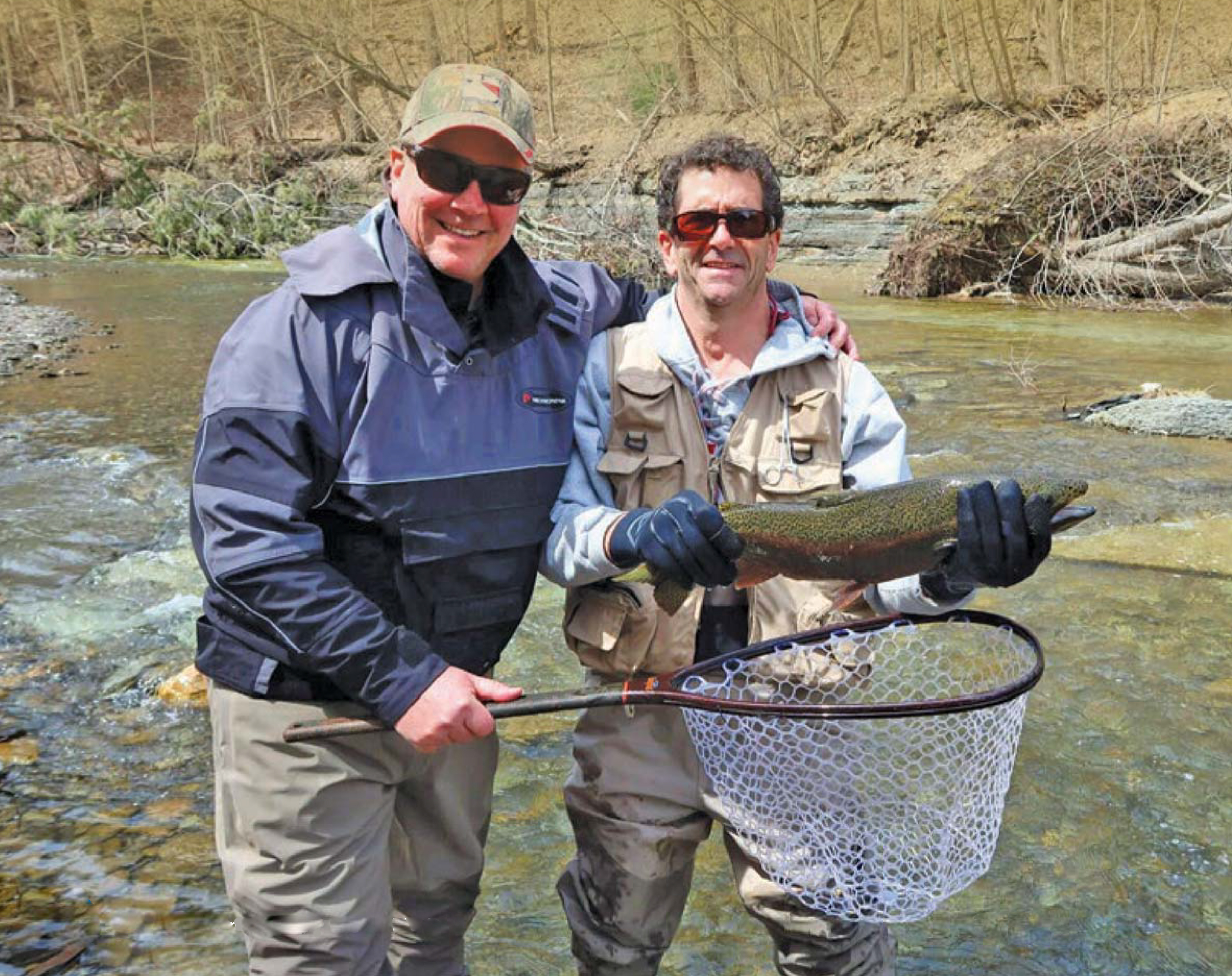
Lake Erie’s tributaries offer steelheading as good as anywhere in the region, minus the crowds.
It wasn’t until this past year that I finally made a couple of trips north to target steelhead and salmon. I would always get the third degree from other trout fishermen as to why I haven’t made the trip somewhere to battle these hard fighting salmonids. Last fall, I made the trek to the Salmon River and while I saw some impressive fish caught, the weekend crowds made for some tough fishing conditions. If you do make the trip to Pulaski, I strongly recommend going during the week and hiring a guide who will know where to go to avoid the crowds. This past spring I decided to hit the Lake Erie tributaries just before the steelhead made their trip back to the big water. My friend and I had a banner trip, sticking a dozen steelies in the 7- to 15-pound range on fly fishing gear. The best part about it was that we had a few of these creeks all to ourselves.
Where to
We originally had our sights set on fishing primarily Cattaraugus Creek in the Springville, N.Y. area. In fact, we had our cabin right on the river, but unfortunately it was unfishable due to heavy flows and cloudy water conditions. However, we booked a guide and he had a laundry list of other tributaries that were fishable and equally productive as the main river. We wound up fishing in gin clear waters and sight casting to trophy size steelhead, often with no other anglers around. There are a bunch of feeder creeks to the Cattaraugus that should be fished when the main river runs high and hard, as their flows will remain easily fishable and with much better water clarity. The “Catt” is a main thoroughfare for the steelhead and should be fished if conditions permit. A drift boat trip is an ideal way to experience and fish the river. After scouting up some local intel, “outstanding when fishable” was the book on the Cattaraugus. Basically, any river or creek that empties into Lake Erie has the potential to produce good fishing for steelhead, among them, Spooner Creek, Clear Creek, Derby Brook, Connoisarauley Creek, Canadaway Creek, Chautauqua Creek and Eighteen Mile Creek.
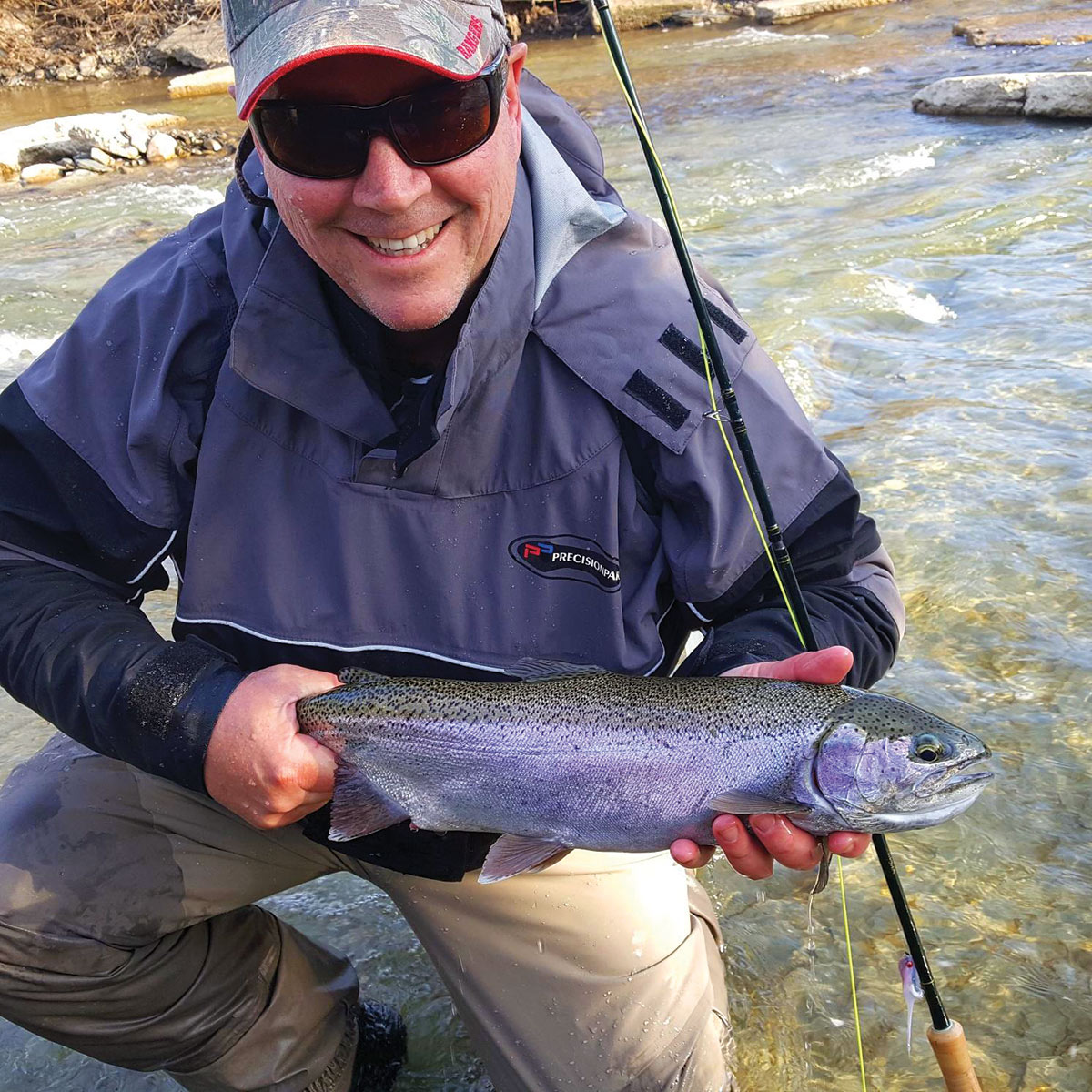
We walked and waded in a couple of beautiful creeks for close to three miles with our guide and it was well worth it. Once again, I recommend hiring a guide at least for the first day to familiarize yourself with these waters, but keep the guides’ spots to yourself. It’s un-sportsman like, not fair to the guide, and in poor taste to spot burn when they are trying to make a living.
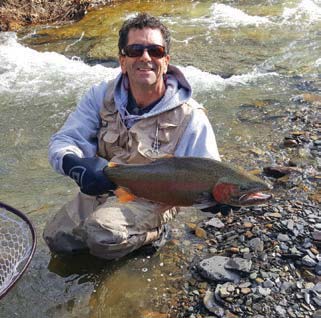
We used “Around the Bend” Guide Service (Elvy Foster), a young local guy with extensive knowledge of this fishery. He was as good, if not better, than any other guide or captain I’ve used. He put us on fish all day and joined us the following day just to fish with us for a busman’s holiday.
We stayed at the Zoar Valley Cabins right on the Cattaraugus. These are spacious cabins with a good size living room, two bedrooms (with five beds), full kitchen, and a nice porch and grill outside. A quick web search on other towns in the area such as Springville, Silver Creek, Gowanda and Ellicottville will provide plenty of other places options for accommodations.
On the way to the Cattaraugus, we stopped at Adventure Bound in Ellicottville, where we picked up some flies, leaders, tippet, and most importantly, advice. Nick from the shop provided us with some great how-to and where-to information. He can also hook you up with a guide if you haven’t already booked one.
Fly Fishing
We stuck with our fly rods and threw streamers for most of our fish. Stripping in streamers and having the rod almost ripped out of my hands was awesome. White steamers in the clear water worked best. Large wooly buggers in olive, black and yellow also worked for several fish. Use the black in stained or murky water. Drifting egg patterns clicked for a couple of fish as well and large nymphs are also very effective. This nymph or egg pattern fishing is the same as regular trout fishing. Use a strike indicator and enough split shot above your fly so you tick the bottom. Lift the rod any time your strike indicator stops, sinks or changes direction. The hits can be subtle or like a freight train, so be ready. The depth and current rate also determine where to set your indicator and how much weight to use. A 6- to 8-weight outfit works fine on the steelies, finished off with a 9-foot, 1x tapered leader and fluorocarbon tippet. The fluorocarbon is a must in clear water and on bright days, but not a necessity when fishing riffles or stained water. With streamers, simply lift the rod on the take to set the hook. If the fish wants to run let your drag do the work and let him go. Use the reel to fight the fish instead of stripping in your line. This is fairly easy fly-fishing in comparison to making perfect casts when presenting dry flies to rising fish.
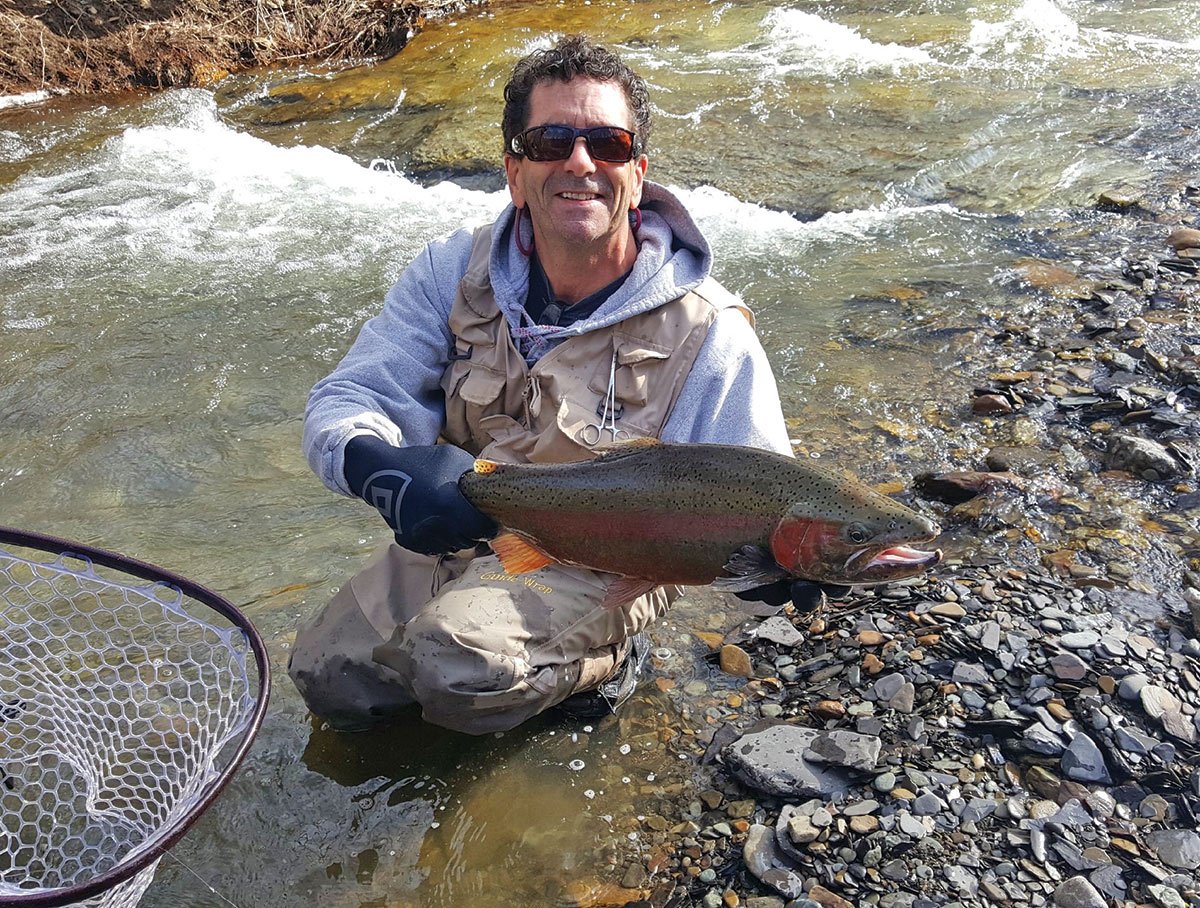
Spinning Too
I prefer the challenge of fly-fishing to spinning but if that’s what’s catching fish, I won’t hesitate to switch gears. We had our spinning gear with us but with the streamer fishing so good, we stuck with the long wand. Spinning for trout and salmon is very popular and effective in this area. As for gear, a 7-foot medium action rod with a spinning reel in the 4000 size range with a smooth drag will get the job done. Spool the reel with 8- to 12-pound test monofilament, and finish it off with a 20-pound test fluorocarbon leader. Many anglers prefer a 9-foot, light action rod, which allows you to fish and cast small offerings effectively on lighter lines, and the length helps wear down the fish. Drifting egg sacs off the bottom is very effective for the steelies, and is a popular tactic on the Salmon River. The key here, like nymphing, is to tick the bottom on the drift. This means using the proper amount of split shot for the current and depth you are fishing. You don’t want to consistently get snagged either, but unfortunately this is a trial and error scenario, so have plenty of hooks, leader material and a wide assortment of weights. You can also use a float to set the proper height above your bait. Spoons, spinners and minnow-like crank or stick baits account for their share of fish as well.
This is an outstanding fishery that is fueled by a great stocking program. The DEC annually stocks over 230,000 steelhead in nine major tributaries. The stockies typically spend two years in Lake Erie before returning to the tributaries as 3-year-olds, when they start to ascend the tributaries in multiple waves from October through April for their spawning ritual. It was amazing to see how territorial and aggressive the males were in claiming their turf with a hen in the area. Why not give it a shot this fall or winter? It’s a bit of a drive, but the time and effort is definitely worth it.
| CONTACT INFO |
|---|
| Fishing Guides: Around the Bend Guiding – Elvy Foster 716-264-9386 • [email protected] Cattaraugus Creek Outfitters – Tackle and Fishing Info: DEC Maps and Information: |

